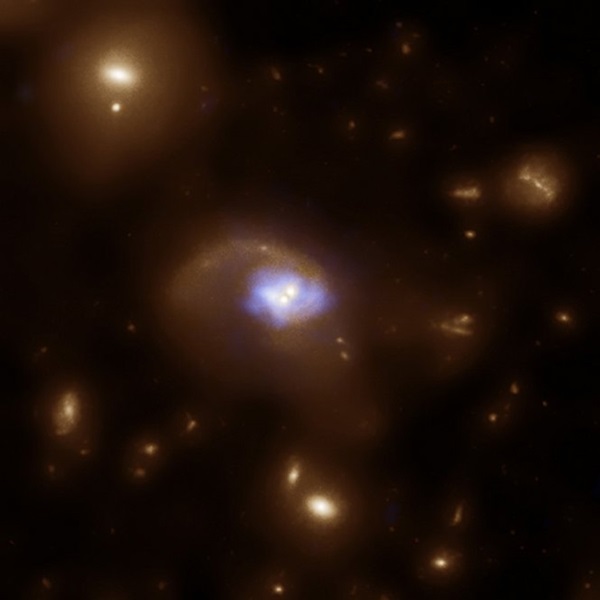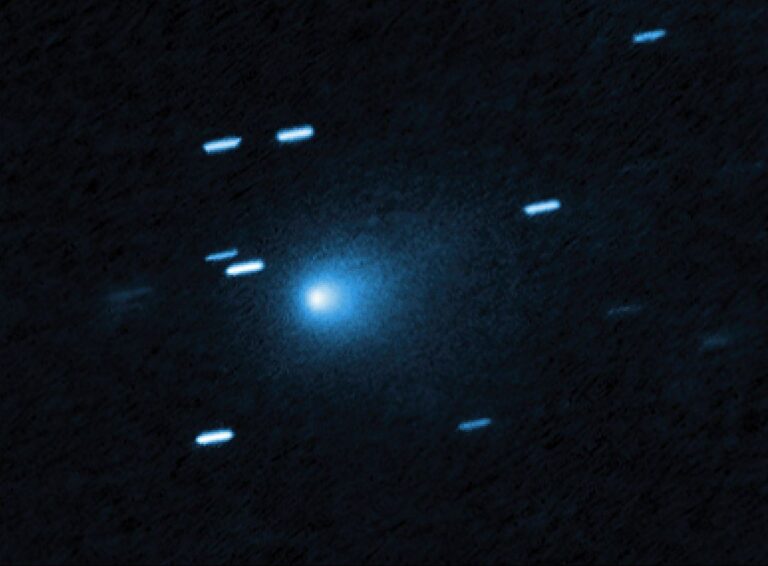Key Takeaways:
Hagai Netzer, Benny Trakhtenbrot, and a team of astronomers from Tel Aviv University in Israel have determined that the era of the first fast growth of the most massive black holes occurred when the universe was only about 1.2 billion years old, not 2 to 4 billion years old as was previously believed, and they’re growing at a fast rate.
The oldest are growing the fastest
The new research is based on observations with some of the largest ground-based telescopes in the world — Gemini North atop Mauna Kea in Hawaii, and the Very Large Telescope Array on Cerro Paranal in Chile. The data obtained with the advanced instrumentation on these telescopes show that the black holes that were active when the universe was 1.2 billion years old are about 10 times smaller than the most massive black holes that are seen at later times. However, they are growing much faster.
The measured rate of growth allowed the researchers to estimate what happened to these objects at earlier as well as later times. The team found that the very first black holes, those that started the entire growth process when the universe was only several hundred million years old, had masses of only 100 to 1,000 times the mass of the Sun. Such black holes may be related to the first stars in the universe. They also found that the subsequent growth period of the observed sources, after the first 1.2 billion years, lasted only 100 to 200 million years.
The new study is the culmination of a 7-year project at Tel Aviv University designed to follow the evolution of the most massive black holes and compare them with the evolution of the galaxies in which such objects reside.
Hagai Netzer, Benny Trakhtenbrot, and a team of astronomers from Tel Aviv University in Israel have determined that the era of the first fast growth of the most massive black holes occurred when the universe was only about 1.2 billion years old, not 2 to 4 billion years old as was previously believed, and they’re growing at a fast rate.
The oldest are growing the fastest
The new research is based on observations with some of the largest ground-based telescopes in the world — Gemini North atop Mauna Kea in Hawaii, and the Very Large Telescope Array on Cerro Paranal in Chile. The data obtained with the advanced instrumentation on these telescopes show that the black holes that were active when the universe was 1.2 billion years old are about 10 times smaller than the most massive black holes that are seen at later times. However, they are growing much faster.
The measured rate of growth allowed the researchers to estimate what happened to these objects at earlier as well as later times. The team found that the very first black holes, those that started the entire growth process when the universe was only several hundred million years old, had masses of only 100 to 1,000 times the mass of the Sun. Such black holes may be related to the first stars in the universe. They also found that the subsequent growth period of the observed sources, after the first 1.2 billion years, lasted only 100 to 200 million years.
The new study is the culmination of a 7-year project at Tel Aviv University designed to follow the evolution of the most massive black holes and compare them with the evolution of the galaxies in which such objects reside.










